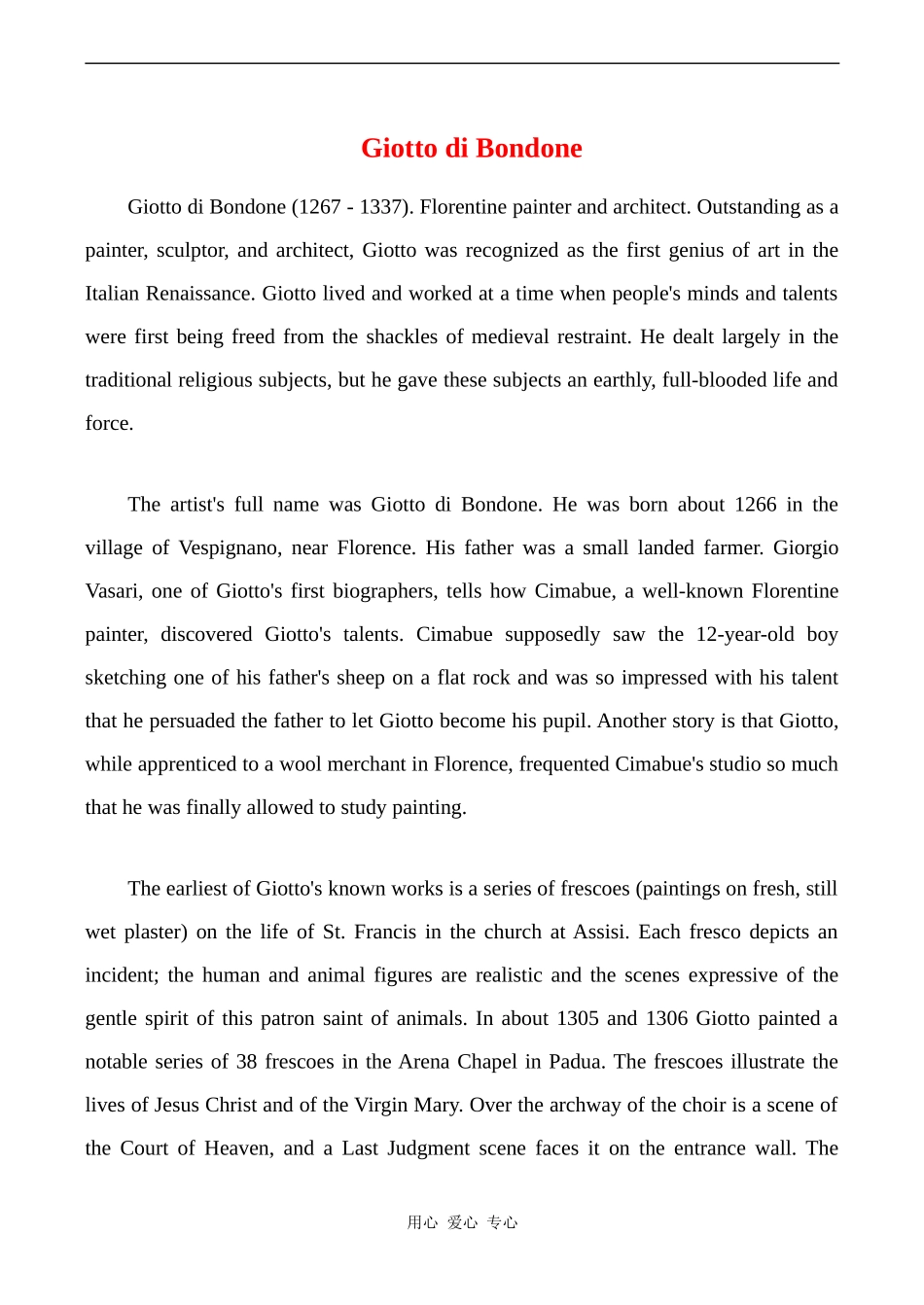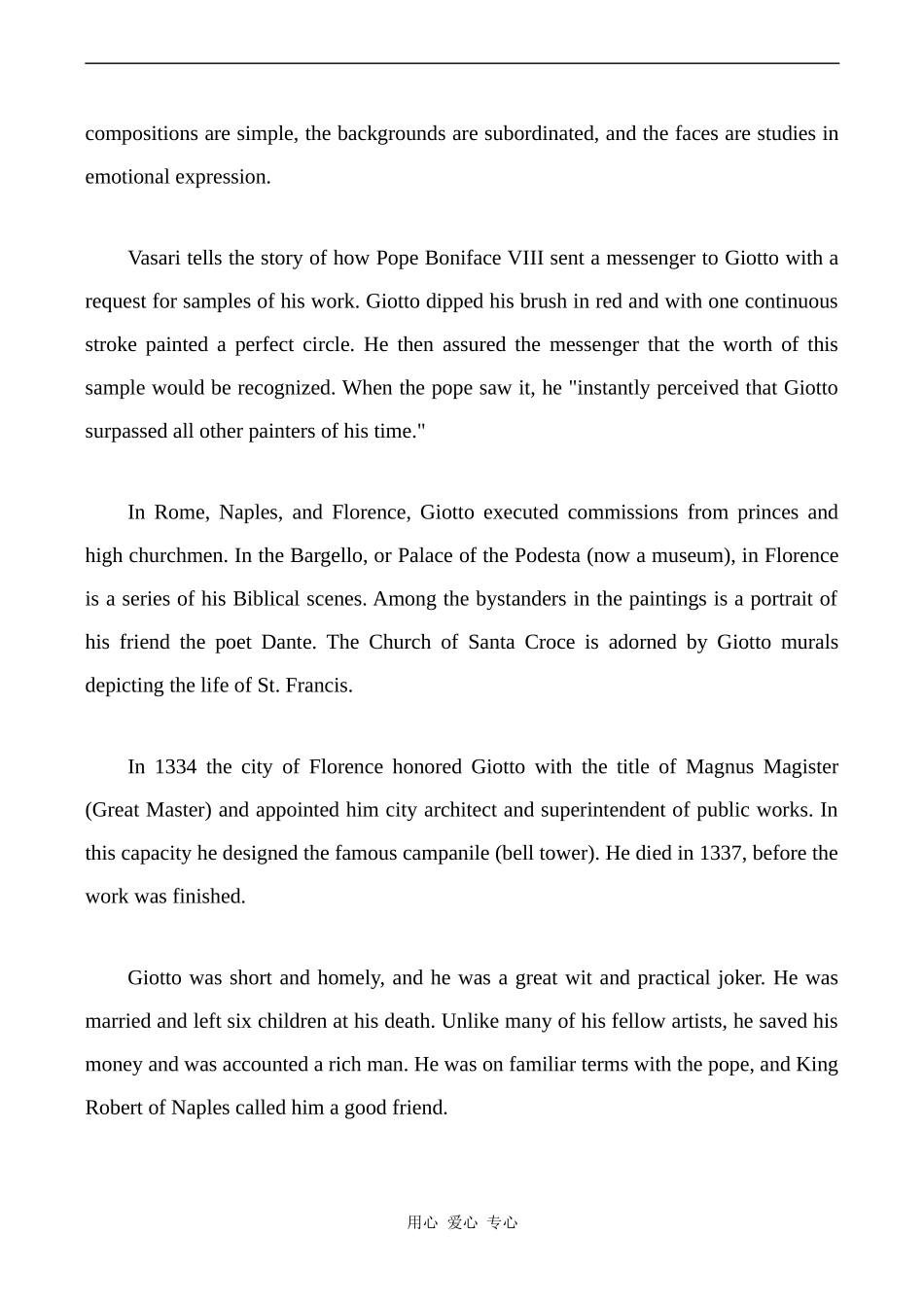Giotto di BondoneGiotto di Bondone (1267 - 1337). Florentine painter and architect. Outstanding as a painter, sculptor, and architect, Giotto was recognized as the first genius of art in the Italian Renaissance. Giotto lived and worked at a time when people's minds and talents were first being freed from the shackles of medieval restraint. He dealt largely in the traditional religious subjects, but he gave these subjects an earthly, full-blooded life and force. The artist's full name was Giotto di Bondone. He was born about 1266 in the village of Vespignano, near Florence. His father was a small landed farmer. Giorgio Vasari, one of Giotto's first biographers, tells how Cimabue, a well-known Florentine painter, discovered Giotto's talents. Cimabue supposedly saw the 12-year-old boy sketching one of his father's sheep on a flat rock and was so impressed with his talent that he persuaded the father to let Giotto become his pupil. Another story is that Giotto, while apprenticed to a wool merchant in Florence, frequented Cimabue's studio so much that he was finally allowed to study painting. The earliest of Giotto's known works is a series of frescoes (paintings on fresh, still wet plaster) on the life of St. Francis in the church at Assisi. Each fresco depicts an incident; the human and animal figures are realistic and the scenes expressive of the gentle spirit of this patron saint of animals. In about 1305 and 1306 Giotto painted a notable series of 38 frescoes in the Arena Chapel in Padua. The frescoes illustrate the lives of Jesus Christ and of the Virgin Mary. Over the archway of the choir is a scene of the Court of Heaven, and a Last Judgment scene faces it on the entrance wall....


